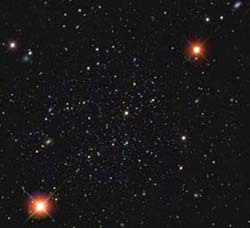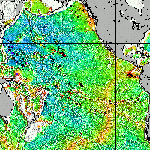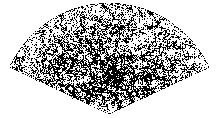 |
|

|
||||
| About SDSS | ||
 | ||
| - What is it? | ||
| - Science | ||
| - Map | ||
| - Census | ||
| - Rare Objects | ||
| - Time Machine | ||
| - Using Redshifts | ||
| The Telescopes | ||
| The Instruments | ||
| The Data | ||
| First Discoveries | ||
| Data Releases | ||
| Publications | ||
| Credits | ||
What is the Sloan Digital Sky Survey?
Simply put, the Sloan Digital Sky Survey is the most ambitious astronomical survey ever undertaken. The survey maps one-quarter of the entire sky in detail, determining the positions and absolute brightnesses of hundreds of millions of celestial objects. It also measures distances to more than a million galaxies and quasars. The SDSS addresses fascinating, fundamental questions about the universe. With the survey, astronomers will be able to see the large-scale patterns of galaxies: sheets and voids through the whole universe. Scientists have many ideas about how the universe evolved, and different patterns of large-scale structure point to different theories. The Sloan Digital Sky Survey will tell us which theories are right - or whether we will have to come up with entirely new ideas. Mapping the Universe
Making maps is an activity central to the step-by-step advance of human knowledge. The last decade has seen an explosion in the scale and diversity of the mapmaking enterprise, with fields as disparate as genetics, oceanography, neuroscience, and surface physics applying the power of computers to recording and understanding enormous and complex new territories. The ability to record and digest immense quantities of data in a timely way is changing the face of science. The Sloan Digital Sky Survey brings this modern practice of comprehensive mapping to cosmography, the science of mapping and understanding the universe. The SDSS will make the largest map in human history. It will give us a three-dimensional picture of the universe through a volume one hundred times larger than that explored to date. The SDSS also records the distances to 100,000 quasars, the most distant objects known, giving us an unprecedented hint at the distribution of matter to the edge of the visible universe. The SDSS is the first large-area survey to use electronic light detectors, so the images it produces will be substantially more sensitive and accurate than earlier surveys, which relied on photographic plates. The results of the SDSS are electronically available to the scientific community and the general public, both as images and as precise catalogs of all objects discovered. By the end of the survey, the total quantity of information produced will rival the information content in all the books of the Library of Congress. By systematically and sensitively observing a large fraction of the sky, the SDSS will have a significant impact on astronomical studies as diverse as the large-scale structure of the universe, the origin and evolution of galaxies, the relation between dark and luminous matter, the structure of our own Milky Way, and the properties and distribution of the dust from which stars like our sun were created. The SDSS will be a new reference point, a field guide to the universe that will be used by scientists for decades to come. The Science of the SDSS
Understanding the arrangement of matter in the universe is made more difficult because the luminous stars and galaxies that we see are only a small part of the total. More than 90% of the matter in the universe does not give off light. The nature, amount and distribution of this "dark matter" are among the most important questions in astrophysics. How has the gravity from dark matter influenced visible structures? Or, put another way, we can use careful mapping of the positions and motions of galaxies to reconstruct the distribution of mass, and from that, we can find clues about dark matter. A Map of the UniverseOne of the difficulties in studying the entire universe is getting enough information to make a picture. Astronomers designed the Sloan Digital Sky Survey to address this problem in a direct and ambitious way: the SDSS gathers a body of data large enough and accurate enough to address a broad range of astronomical questions. The SDSS has obtained high-resolution pictures of one quarter of the entire sky in five different colors. From these pictures, advanced image processing software will measure the shape, brightness, and color of hundreds of millions of astronomical objects including stars, galaxies, quasars (compact but very bright objects thought to be powered by material falling into giant black holes), and an array of other celestial exotica. Selected galaxies, quasars, and stars are observed using an instrument called a spectrograph to determine accurate distances to a million galaxies and 100,000 quasars, and to provide a wealth of information about the individual objects. These data give the astronomical community one of the things it needs most: a comprehensive catalog of the constituents of a representative part of the universe. SDSS's map will reveal how big the largest structures in our universe are, and what they look like. It will help us understand the mechanisms that converted a uniform "primordial soup" into a frothy network of galaxies.  An Intergalactic CensusThe U.S. Census Bureau collects statistical information about how many people live in the U.S., where they live, their races, their family incomes, and other characteristics. The Census becomes a primary source of information for people trying to understand the nation. The Sloan Digital Sky Survey will conduct a sort of celestial census, gathering information about how many galaxies and quasars the universe contains, how they are distributed, their individual properties, and how bright they are. Astronomers will use this information to study questions such as why flat spiral galaxies are found in less dense regions of the universe than football-shaped elliptical galaxies, or how quasars have changed during the history of the universe. The SDSS will also collect information about the Milky Way galaxy and even about our own solar system. The wide net cast by the SDSS telescope will sweep up as many stars as galaxies, and as many asteroids in our solar system as quasars in the universe. Knowledge of these objects will help us learn how stars are distributed in our galaxy, and where asteroids fit into the history of our solar system. Needles in a Haystack, Lighthouses in the Fog
Rare objects, almost by definition, are scientifically interesting. By sifting through the several hundred million objects recorded by the SDSS, scientists will be able to construct entire catalogs of the most distant quasars, the rarest stars, and the most unusual galaxies. The most unusual objects in the catalog will be about a hundred times rarer than the rarest objects now known. For example, stars with a chemical composition very low in metals like iron are the oldest in the Milky Way. They can therefore tell us about the formation of our galaxy. However, such stars are also extremely rare, and only a wide-field deep sky survey can find enough of them to form a coherent picture. Because they are so far away, quasars can serve as probes for intergalactic matter throughout the visible universe. In particular, astronomers can identify and study galaxies by the way they block certain wavelengths of light emitted by quasars behind them. Using the light from quasars, the SDSS will detect tens of thousands of galaxies in the initial stages of formation. These galaxies are typically too faint and too diffuse for their own light to be detected by even the largest of telescopes. Quasar probes will also allow scientists to study the evolution of the chemistry of the universe throughout its history. The Telescope as a Time MachinePeering into the universe with a telescope allows us to look not only out into space, but also back in time. Imagine intelligent beings in a planetary system around a star 20 light years away. Suppose these beings pick up a stray television transmission from Earth. They would see events 20 years after they occurred on Earth: for instance, a newscast covering Ronald Reagan's re-election (1984) would be seen 20 years later (2004). While today we have seen three new presidents, the beings would still see Reagan. Light travels extremely fast, but the universe is a very big place. In fact, astronomers routinely look at quasars so far away that it takes billions of years for the light they produce to reach us. When we look at galaxies or quasars that are billions of light-years away, we are seeing them as they were billions of years ago. By looking at galaxies and quasars at different distances, astronomers can see how their properties change with time. The SDSS will measure the distribution of nearby galaxies, allowing astronomers to compare them with more distant galaxies now being seen by the new instruments like the Hubble Space Telescope and the Keck Telescope. Because quasars are very bright, the SDSS will allow astronomers to study their evolution through more than 90 percent of the history of the universe. Measuring Distance and Time: Redshift
The light coming to us from these distant objects is shifted toward the red end of the electromagnetic spectrum, in much the same way the sound of a train whistle changes as a train leaves or approaches a station. The faster a distant object is moving, the more it is redshifted. Astronomers measure the amount of redshift in the spectrum of a galaxy to figure out how far away it is from us. By measuring the redshifts of a million galaxies, the Sloan Digital Sky Survey provides a three-dimensional picture of our local neighborhood of the universe.  |